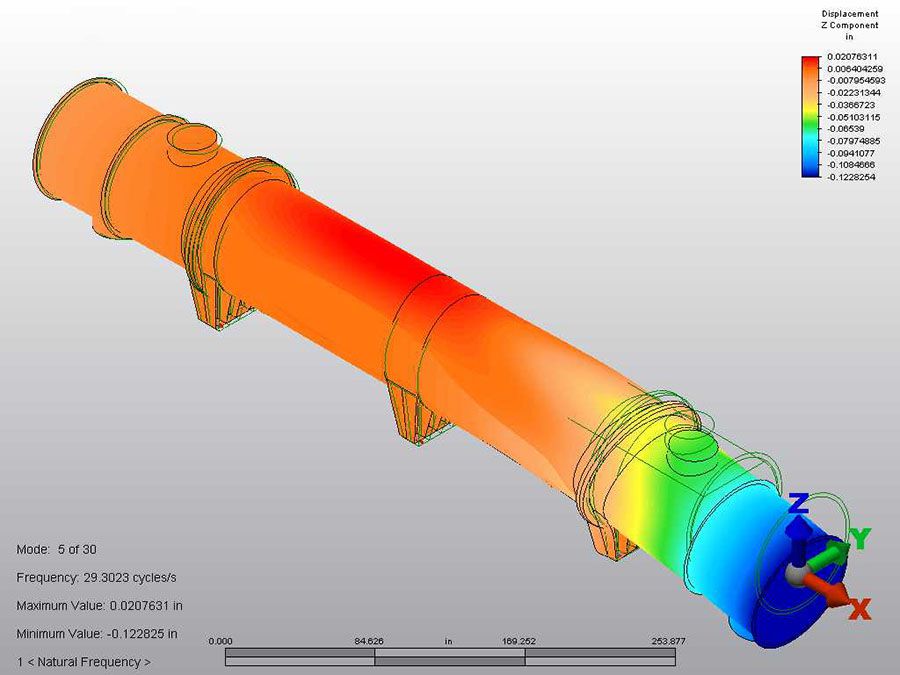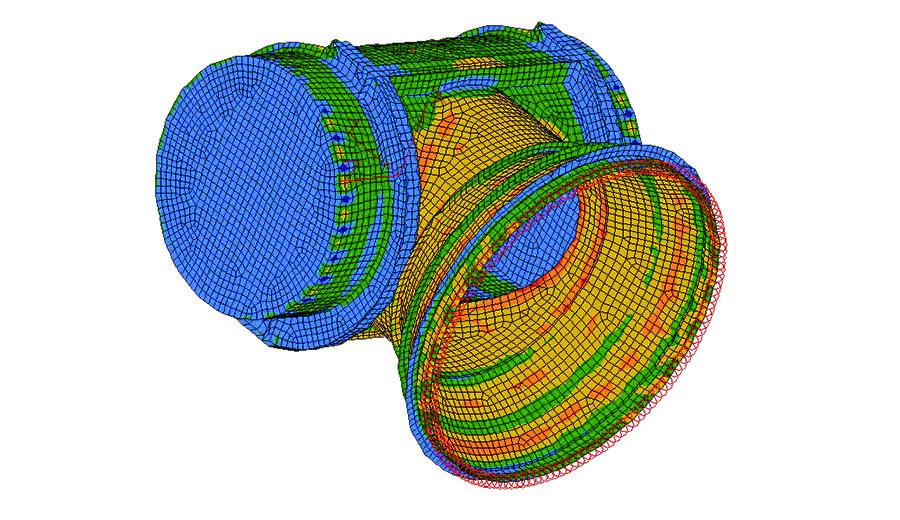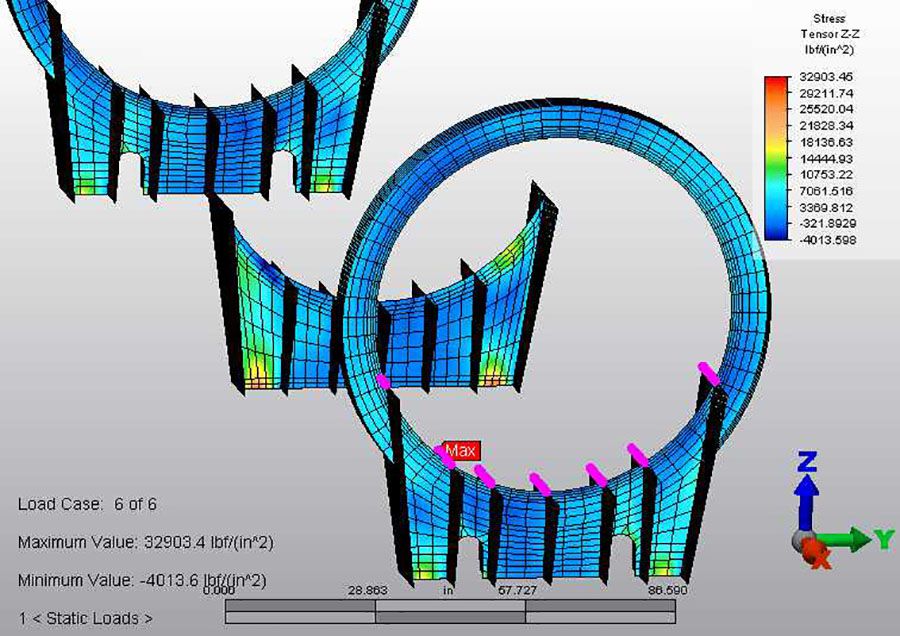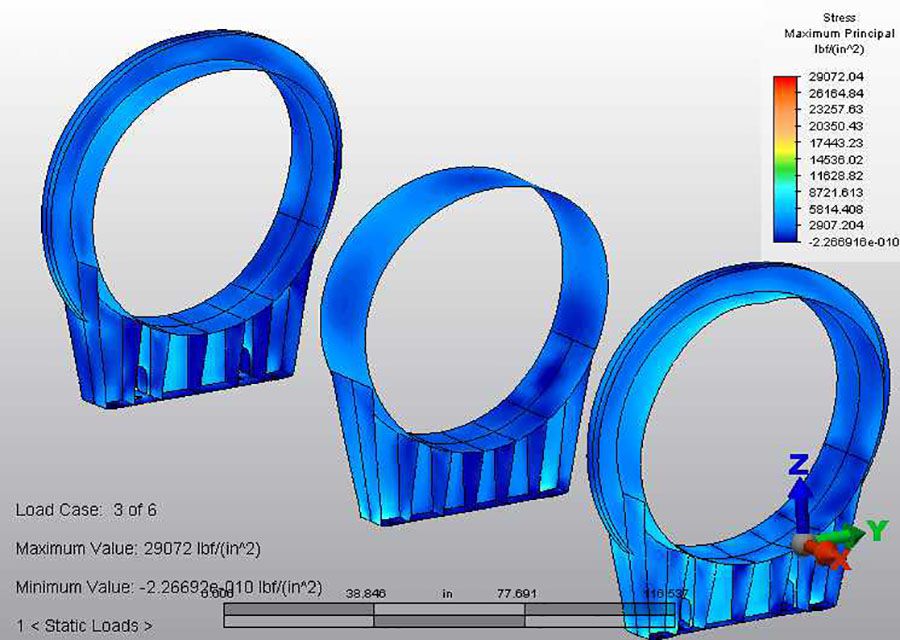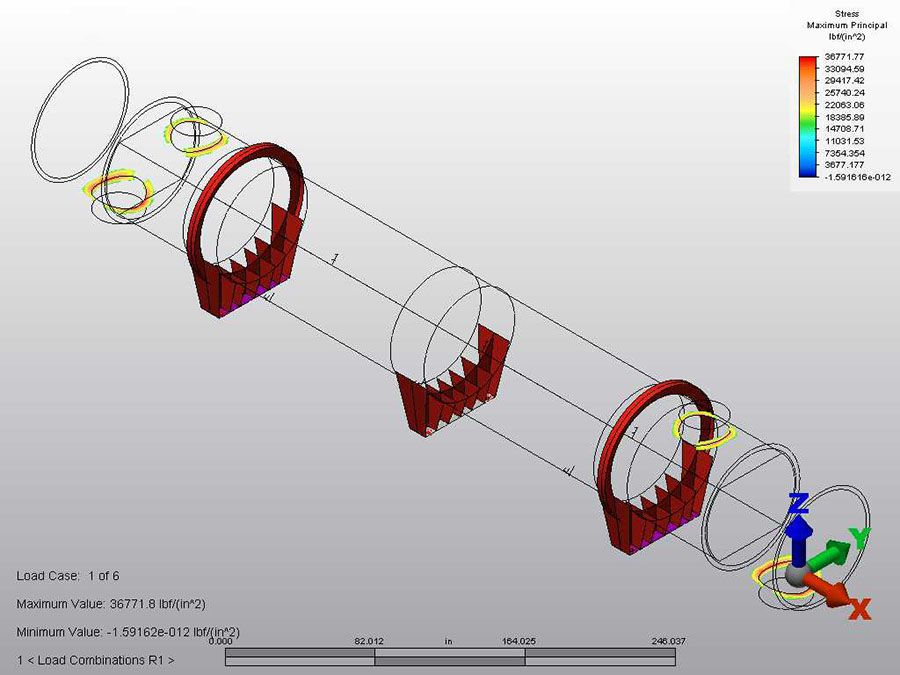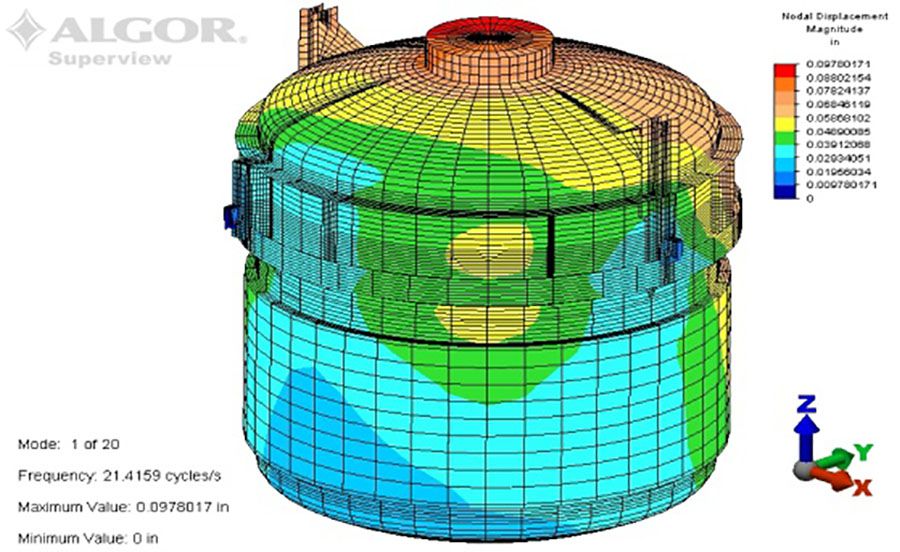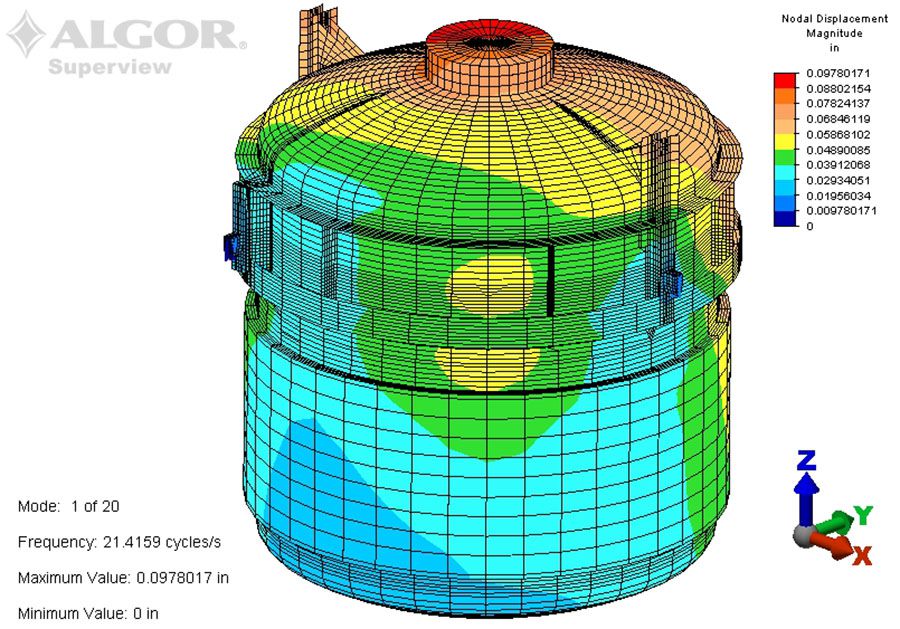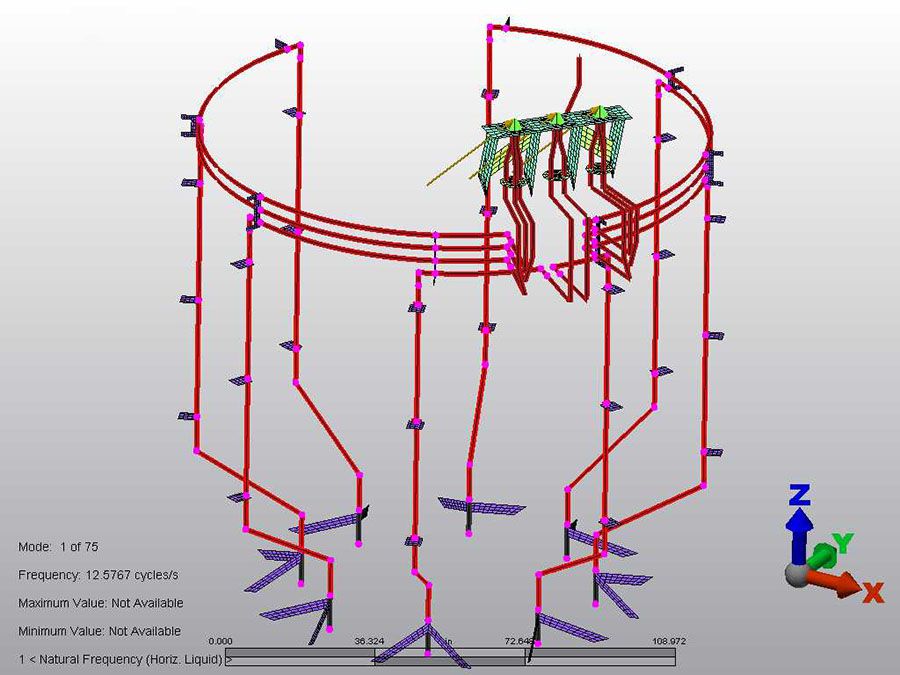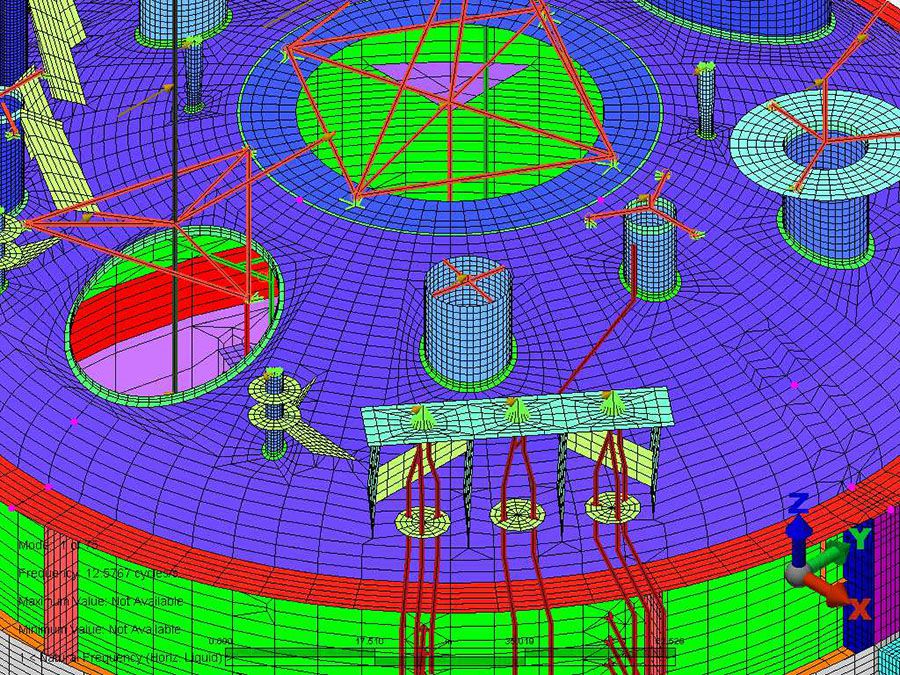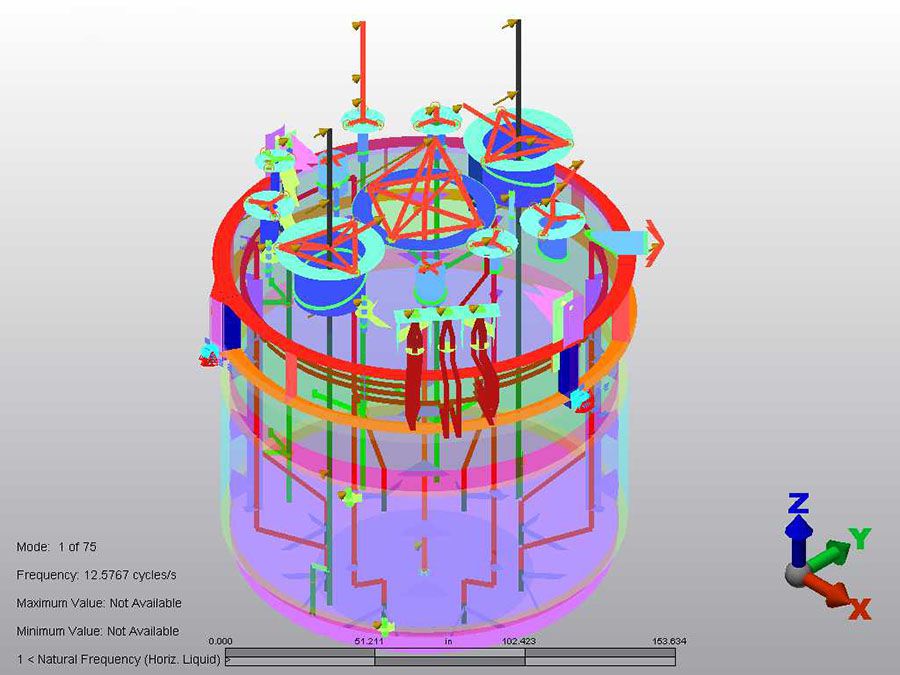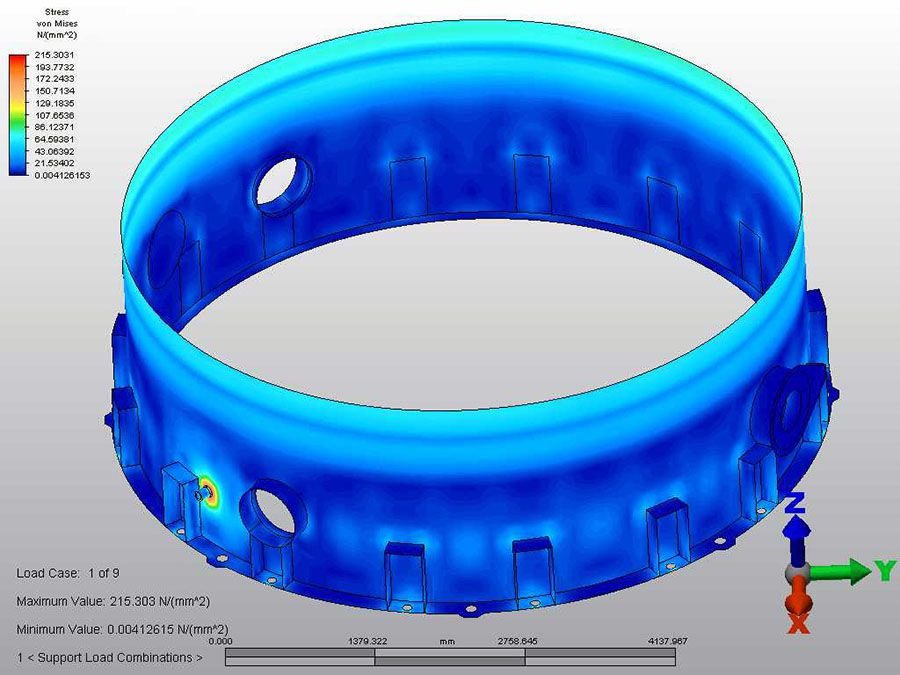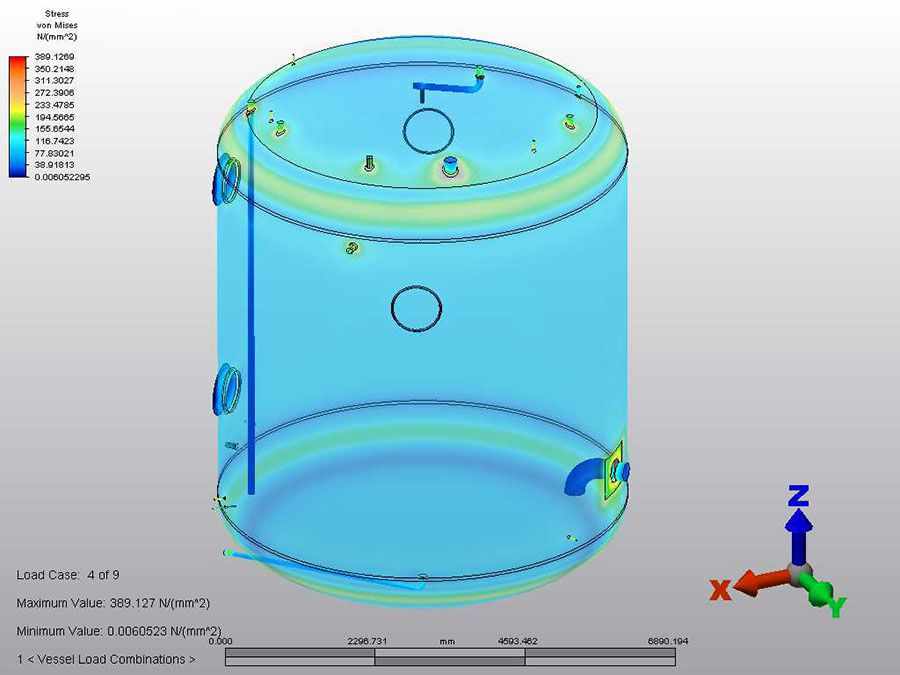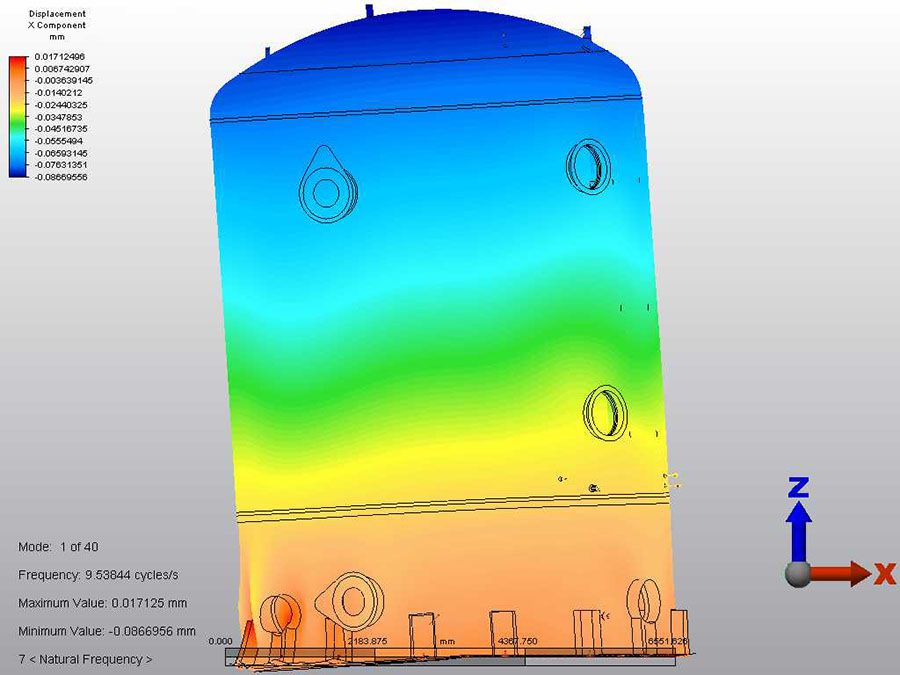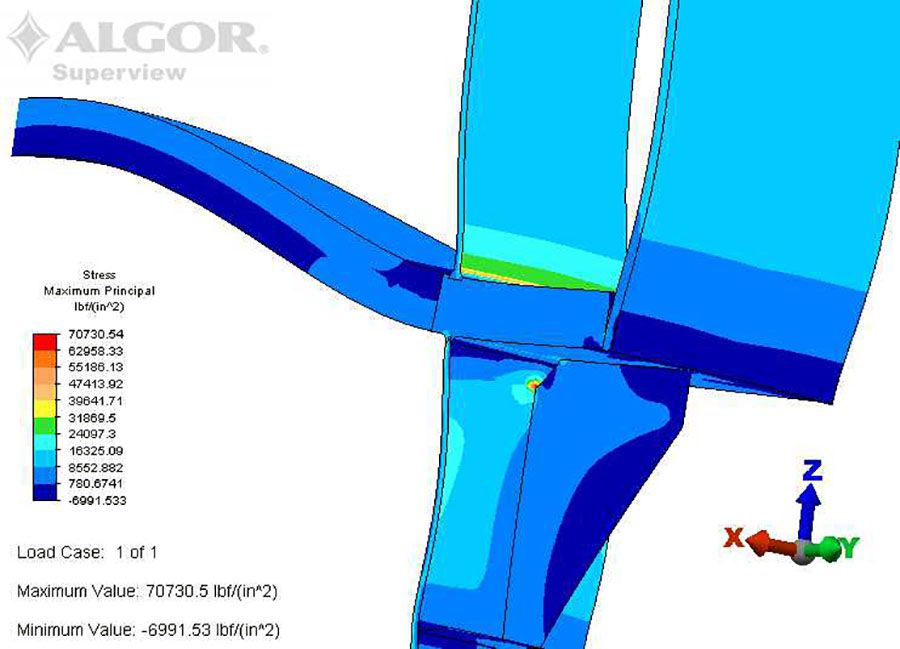Analysis
Joseph Oat Engineers perform analyses of pressure vessels and structures in-house. These analyses validate vessel designs as required by customer specifications and pressure codes and stand up to rigorous review and scrutiny. Our range of capability includes dynamic seismic analysis, thermal growth stresses, fatigue, local stresses, heat exchanger vibration, and general structural design. Joseph Oat uses modern analysis tools of finite element analysis (FEA), solid modeling, proprietary software, and custom mathematical models, accurately accomplishing analyses to qualify the equipment we build for your challenging service requirements.
Joseph Oat Analyses use modern analysis tools that include mechanical and thermal finite element analysis, solid modeling, software developed by JOC for specific calculations, and custom mathematical models for any solution that is required. These software tools are qualified and maintained for use on Nuclear Safety Related equipment under our NQA-1 and ASME Section III Quality Assurance Program. They are presented in clear and comprehensive reports. These reports document the design inputs, any assumptions that are made, the solutions chosen for the analysis, analysis outputs and conclusions. Qualification of the equipment with the customer specifications and Code requirements is demonstrated. All analyses are performed or reviewed by Registered Professional Engineers.
Joseph Oat Analyses include the following:
- Seismic Qualifications of nuclear safety related pressure vessels and other equipment. Seismic analyses include the following steps:
- Detailed weight and center of gravity determination
- Development of a model; whether analytic, beam FEA or plate FEA
- Determination of natural frequency and mode shapes
- Dynamic or equivalent static analysis of seismic accelerations
- Application of thermal, pressure, fluid, dead weight and piping loads
- Combination of all loads per customer specification or Code requirements
- Evaluation of stresses against the Code requirements at critical points in the load path
- Presentation of the results in a well-documented report format for review
- FEA analysis including:
- Beam, plate, axisymmetric, and solid elements under mechanical and thermal linear stress analysis, natural frequency analysis, response spectrum and dynamic analyses, and thermal conduction analysis.
- Fatigue Evaluations per ASME Section III Class 1 and Section VIII Division 2. Fatigue analyses include the following steps:
- Performing the screening evaluation to determine whether a full analysis is required
- Identification of critical areas and load cycles
- Development of a model; whether analytic or FEA
- Calculation of stress concentration factors
- Stress analysis and compilation of overall usage factor
- Presentation of the results in a well-documented report format for review
- Design of tubesheets not within the scope of ASME UHX or TEMA
- Flow-Induced Vibration of Shell and Tube Heat Exchangers
- Evaluations of custom configurations or non-standard loading conditions.


